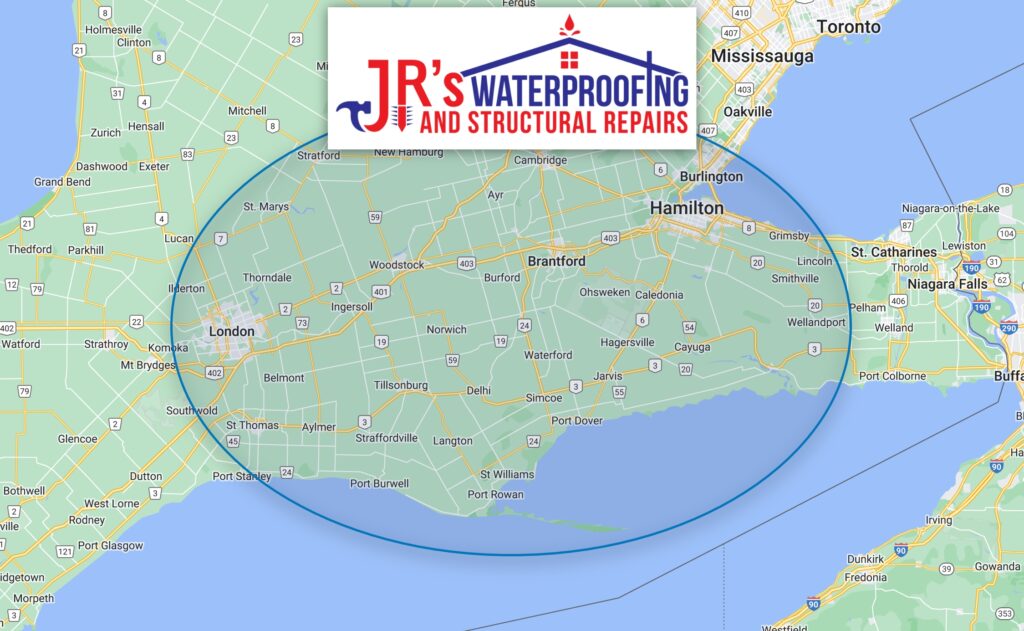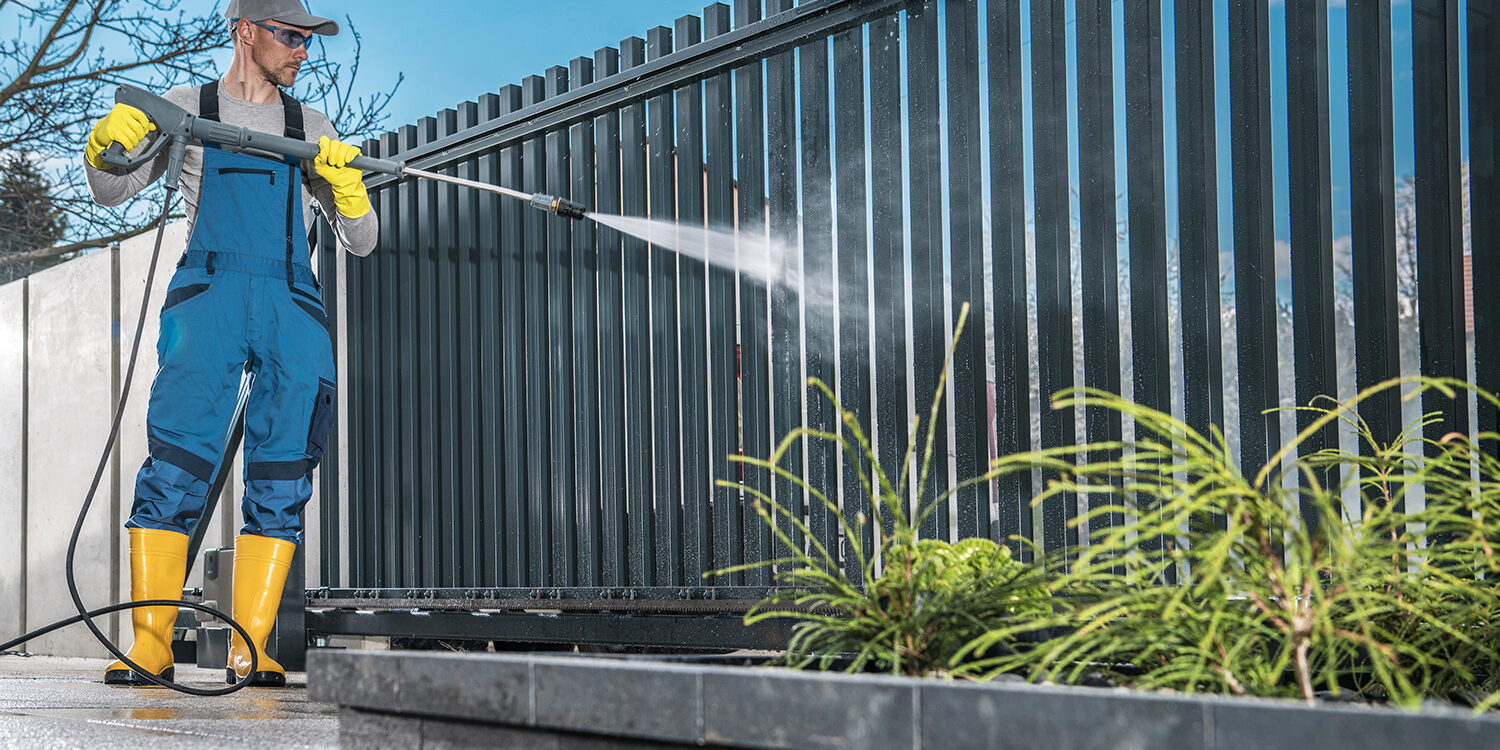Prevent the Frost & Thaw From Flooding Your Basement
Basement waterproofing is the process of making your basement resistant to water and moisture. This is achieved through various methods such as sealants, drainage systems, and insulation. It is an essential step for homeowners, especially during the winter months, to prevent the frost and thaw from flooding their basement.
But What Causes Basement Flooding, My Captain?
The most common causes of basement flooding in Southern Ontario in the winter are the changes in temperature and precipitation. When the temperature drops below freezing, any water in the soil surrounding the foundation can freeze and expand, causing cracks and damage to the foundation. As the temperature rises, the frozen water thaws and can enter the basement through these cracks and openings. Additionally, snow can accumulate around the foundation and melt, seeping into the basement… It’s a vicious cycle, indeed!
The signs of basement water damage may include musty odours, mold growth, dampness, and discolouration on walls and floors. If you suspect your basement is flooding, you can check for standing water or use a moisture meter to measure the humidity levels in the air.
Basement water damage can have serious consequences such as structural damage, mold growth, and health hazards. It is essential to take preventive measures to avoid these issues.
One of the best ways to prevent basement flooding during winter is to invest in professional basement waterproofing. They have the expertise, tools, and materials to effectively seal your basement and provide long-term protection. Some popular methods for winter basement waterproofing include:
- Exterior waterproofing
- Interior waterproofing
- Exterior drainage systems
If your basement does flood during the winter, it is crucial to act quickly to prevent further damage. Start by removing any standing water using a wet vacuum or submersible pump. Then, dry out the affected area using fans and dehumidifiers. Finally, assess the damage and make necessary repairs to prevent future flooding.
Basement waterproofing during winter is essential to protect your home and prevent costly repairs. By understanding the causes of basement flooding, recognizing the signs of water damage, and taking preventive measures, you can keep your basement dry and secure during the coldest months of the year.
Critical Takeaways:
- Basement waterproofing is crucial to protect your home from costly water damage during the winter months.
- Frost and thaw, as well as snow accumulation, can lead to basement flooding if proper preventative measures are not taken.
- Regularly checking for signs of water damage and investing in professional waterproofing methods can help prevent basement flooding and damage during the winter.
What is Basement Waterproofing?
Basement waterproofing is the process of protecting a basement area from water infiltration. This is achieved through various techniques, including sealing cracks, installing drainage systems, and applying waterproof coatings to the walls and floors.
It is important to note that before beginning any waterproofing project, it is crucial to ensure that the gutters and downspouts are properly directing water away from the foundation to prevent water buildup around the basement walls.
Why is it Important to Waterproof Your Basement in Southern Ontario?
Basement waterproofing is essential in preventing water damage, mold growth, and structural issues. Waterproofing is crucial in protecting your property and belongings, ensuring a dry, safe, and habitable space.
Suggestions:
- It is recommended to regularly inspect and maintain your basement’s drainage system.
- Additionally, consider professional waterproofing services for comprehensive protection.

What are the Causes of Basement Flooding in the Winter?
Basement flooding in the winter can be caused by a variety of factors, including:
- heavy snowmelt
- frozen ground that prevents proper drainage
- cracks in the foundation due to freezing and thawing cycles
Inadequate insulation or improper sealing can also lead to burst pipes. To prevent winter basement flooding, it is important to:
- have proper insulation
- regularly maintain sump pumps
- ensure effective grading around the house to direct water away from the foundation
How Does Frost and Thaw Affect Basement Flooding?
- Frost Heave: Freezing temperatures cause the soil to expand, leading to pressure on basement walls and potential cracks.
- Thawing: As the ground thaws, the pressure from the soil can force water into any existing cracks, causing basement flooding.
- Drainage: Ensure proper grading around the foundation to direct melted snow and ice away from the basement.
- Seal Cracks: Inspect and seal any cracks in the foundation to prevent water seepage.
To understand how frost and thaw can impact basement flooding in your Southern Ontario home, it is important to consider the following factors:
- Freezing temperatures causing soil expansion and pressure on basement walls.
- Melted snow and ice being directed towards the basement due to improper grading.
- Potential cracks in the foundation that can lead to water seepage.
To prevent these issues, it is crucial to maintain the foundation and consider professional waterproofing for long-term protection.
What Role Does Snow Play in Basement Flooding?
Snow can play a significant role in basement flooding through the process of snowmelt. As temperatures rise, accumulated snow can melt and seep into the ground, potentially saturating the soil around the foundation. This increased saturation can result in water seepage or even basement flooding. To prevent this, it is important to have proper drainage systems and well-maintained gutters in place to redirect snowmelt away from the foundation and reduce the risk of basement flooding.
If your basement is starting to resemble a water park, it may be a sign of some serious water damage.
What are the Signs of Basement Water Damage?
Knowing the signs of basement water damage is essential in order to intervene and prevent potential structural problems.
- A damp and musty odour, which can indicate the presence of mold growth.
- Water stains or discolouration on walls and floors.
- Peeling paint or wallpaper, likely caused by prolonged exposure to moisture.
- Efflorescence, a white chalky residue that may indicate water seepage.
- Warped or buckled walls and floors, a clear indication of water damage.

How Can You Tell if Your Basement is Flooding?
- Look for standing water or puddles in the basement.
- Check for damp or musty odours, indicating potential moisture accumulation.
- Inspect walls and floors for water stains or discolouration.
- Monitor for mold growth, as it can be a sign of prolonged exposure to moisture.
- Observe any rust or corrosion on metal surfaces, which may indicate contact with water.
What are the Effects of Basement Water Damage?
Basement water damage can have a variety of negative effects, including mold growth, structural deterioration, and electrical hazards. In addition, it can also pose health risks due to the presence of mold spores and damp conditions. It is important to address water damage promptly in order to prevent these effects and maintain a safe living environment.
Don’t let your basement turn into a seasonal swimming pool – Winterize it with proper waterproofing methods.
How Can You Prevent Basement Flooding During the Winter?
- Inspect Gutters and Downspouts: Ensure they are clear of debris and properly direct water away from the foundation.
- Seal Cracks: Use hydraulic cement to fill any cracks in the foundation and prevent water from seeping in.
- Install Window Well Covers: Keep snow and ice from building up near basement windows.
- Check Sump Pump: Make sure the sump pump is in working condition and has a battery backup in case of power outages.
- Grade Soil: Slope the soil away from the foundation to avoid water pooling near the house.
A friend successfully prevented basement flooding during a harsh winter by redirecting downspouts away from the house and installing a sump pump with a battery backup.
What Are the Best Basement Waterproofing Methods for Winter?
The most effective methods for winter basement waterproofing include:
- Exterior waterproofing
- Interior drainage systems
- Installing a sump pump
It is also important to:
- Insulate pipes
- Seal foundation cracks
- Ensure proper grading to prevent basement flooding during the winter months
My neighbor learned this lesson last winter when their home experienced flooding due to heavy snowmelt. Fortunately, professional exterior waterproofing was able to save their home from further damage, highlighting the importance of proactive winter waterproofing.
What Are the Benefits of Professional Basement Waterproofing?
Professional basement waterproofing offers a multitude of benefits, providing a dry and secure environment for your basement.
- Prevents damage: By hiring professionals for waterproofing, you can safeguard your basement from issues caused by water, such as mold growth and structural deterioration.
- Long-term solution: This method offers a lasting solution, reducing the need for frequent repairs and maintenance.
- Enhances property value: A waterproofed basement can increase the overall value of your property and make it more attractive to potential buyers.
What Should You Do if Your Basement Floods in the Winter?
If your basement floods in the winter, it is crucial to take immediate action to minimize damage and safety risks. The first step is to turn off the electricity to the affected area. Next, identify the source of the water and try to stop it if possible. Promptly remove the water to prevent any structural damage or potential growth of mold. It is highly recommended to contact professionals for assistance with water extraction, drying, and restoration. Additionally, documenting the damage is important for insurance claims.
How Can You Remove Water from Your Basement?
- Identify the Source: Pinpoint the entry point of water to effectively address the issue.
- Use a Sump Pump: Install a sump pump to quickly remove standing water.
- Apply Wet-Dry Vacuum: Utilize a wet-dry vacuum to extract water from the affected area.
- Dehumidify: Use dehumidifiers to reduce moisture and prevent mold growth.
- Seek Professional Help: Contact basement waterproofing experts for thorough water removal and prevention measures.
When dealing with basement water issues, it is important to act swiftly and thoroughly to prevent long-term damage. Consider consulting a professional for effective and long-lasting solutions.
What Steps Should You Take to Repair Basement Water Damage?
- Assess the extent of the damage.
- Remove water and moisture to prevent mold growth.
- Dispose of damaged items and materials.
- Sanitize and disinfect the affected area.
- Repair any structural or foundational damage.
- Seal any cracks and gaps to prevent further water intrusion.
Did you know? The average cost of repairing basement water damage can range from $1,000 to $8,000, depending on the extent of the damage and the necessary repair methods.

Frequently Asked Questions
What is basement waterproofing and why is it important during winter months?
Basement waterproofing is the process of preventing water from entering a basement. It is important during winter months because the combination of freezing temperatures, melting snow, and hydrostatic pressure can create the perfect conditions for foundation leaks and flooding.
Is it a good idea to wait until spring to address basement leaks or should it be done during winter?
It is not recommended to wait until spring to address basement leaks. Winter weather can worsen existing problems, leading to costly repairs. It is best to address any issues as soon as possible, regardless of the season.
What are some preventative measures that can be taken to protect against basement leaks during winter?
Some preventative measures include properly waterproofing the basement, ensuring proper drainage, and regularly checking and maintaining drainage systems. It is also important to insulate the basement to prevent heat loss and ad-freezing.
Can basement waterproofing be done during subzero temperatures?
Yes, basement waterproofing can be done during subzero temperatures. Sealing foundation cracks is an effective preventative measure and can be done even in subzero temperatures.
What are some common issues that can arise when a basement is left unheated during winter?
Unheated basements can experience problems such as frozen pipes, ice block formation, and frost heaving. These issues can lead to foundational problems and should be addressed promptly.
Is it more cost-effective to waterproof a basement during winter or wait until warmer weather?
It is more cost-effective to waterproof a basement during winter. GTA companies that specialize in basement waterproofing are less busy during this time, making it a good time to get repairs done quickly and avoid long wait times during the busy rainy season.
Waterproofing Company Contact Info



